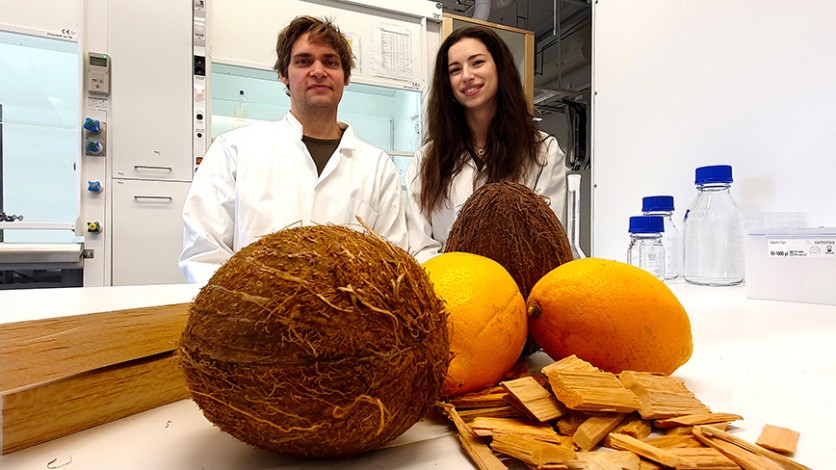Imagine a future where your home is heated and cooled with the help of coconuts and lemons!
That fruity possibility may not be so far-fetched as a team of researchers from KTH Royal Institute of Technology in Stockholm has developed a new wood composite thermal battery that combines these renewable sources with modified wood.
This innovative material has the power to store both heat and cold, making it a potential game-changer in the world of sustainable construction.

Energy-saving Material
The team explained that using just 100 kilos of the material could save about 2.5 kWh per day in heating or cooling a home, given an ambient temperature of 24C.
The material is charged by any heat source, as long as the temperature fluctuates around the transition temperature of 24C, which can be tailored depending on the location and application.
When heated, the limonene acrylate transforms into a bio-based polymer that restores the wood's strength and allows light to permeate. At the same time, the coconut molecule is trapped within the material, enabling the storage and release of energy.
The coconut molecule can transition from solid to liquid and vice versa, absorbing or releasing energy in the process, similar to how water freezes and melts.
This means that the wood composite thermal battery can heat or cool the surroundings as needed. The researchers believe that this material could be used for both exterior and interior building material, providing both transparency and energy-saving benefits.
Read Also : Researchers Use Machine Learning to Detect Flaws in Laser Powder Bed Fusion Additive Manufacturing Process
Homes, Buildings, and Greenhouses!
But it's not just for homes and buildings. The team suggests that this material could be used in greenhouses, where the wood becomes transparent when the sun shines, storing more energy, and becomes cloudy at night, releasing the heat stored during the day.
This could lead to reduced energy consumption for heating while improving plant growth.
"When the sun shines, the wood becomes transparent and stores more energy, while at night it becomes cloudy and releases the heat stored during the day. That would help reduce energy consumption for heating and at the same time provide improved growth," KTH researcher Céline Montanari said in a press release statement.
The possibilities are endless with this innovative material. It's exciting to think about the potential impact this could have on sustainable construction and energy usage in the future.
The work's findings were published in the scientific journal Small.
Related Article : Scientists Develop 'Conductive Play-Doh:' A Plastic-like Material That Conducts Electricity Like Metal

ⓒ 2025 TECHTIMES.com All rights reserved. Do not reproduce without permission.




